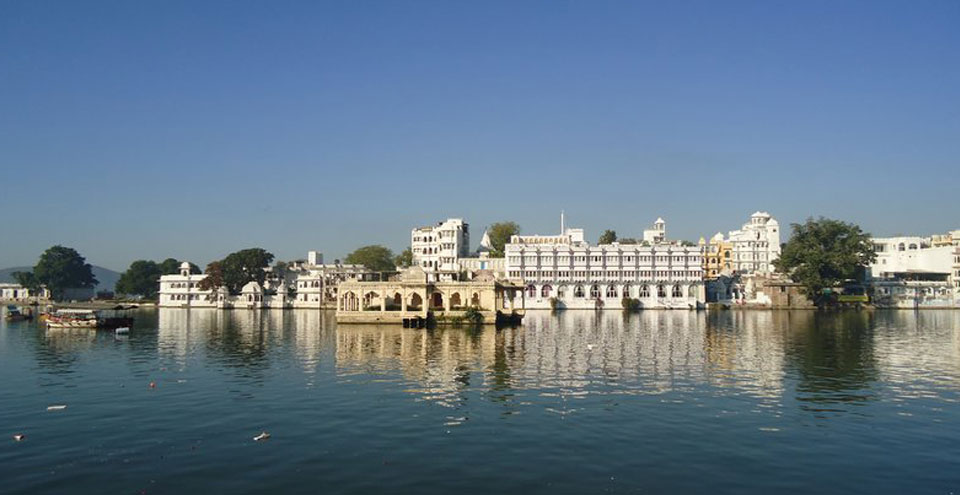
Udaipur-Book a trip
UDAIPUR
Often referred to as the ‘Venice of the East’, the city of lakes Udaipur is located around azure water lakes and is hemmed in by lush green hills of Aravallis. The famous Lake Palace, located in the middle of Lake Pichola is one of the most beautiful sights of Udaipur. It is also home to Jaisamand Lake, claimed to be the second largest man-made sweet water lake in Asia. The beautiful City Palace and Sajjangarh (Monsoon Palace) add to the architectural beauty and grandeur of the city. The city is also known for its profusion of zinc and marble. Solar observatory in Lake Fateh Sagar is the only observatory in India located on an island and has been made on the pattern of Big Bear Lake in Southern California. The ten-day Shilpgram Festival which starts from 21 Dec to 30 Dec pulls in a large number of people interested in arts and crafts.
Udaipur was founded in 1553 by Maharana Udai Singh II as the new capital of Mewar Kingdom. It is located in the fertile, circular Girwa Valley to the southwest of Nagda, which was the first capital of Mewar.
ADDITIONAL INFO
UDAIPUR CITY PALACE
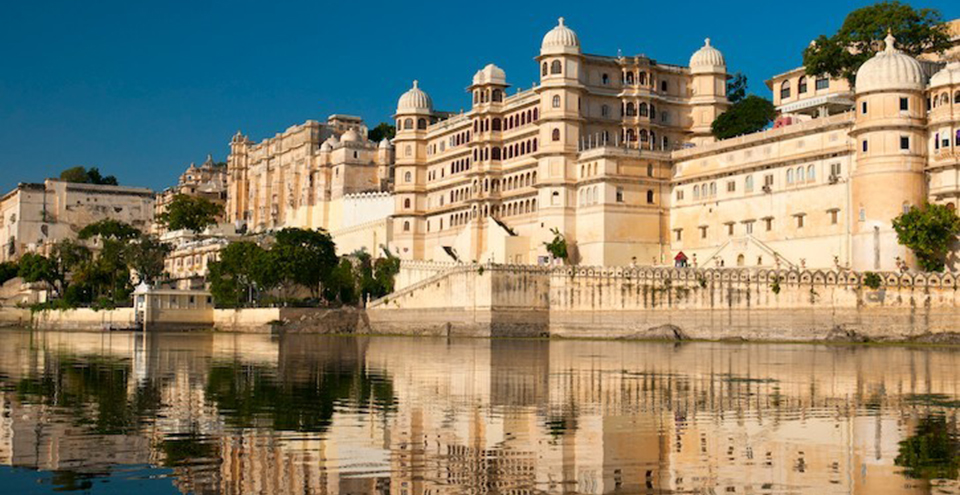 The City Palace towers over Lake Pichola. The balconies, cupolas, and towers of the palace give a wonderful view of the lake and the surrounding city. This complex actually consists of four major and several minor palaces that collectively form the magnificent City Palace. The main part of the palace is now preserved as a museum displaying artifacts.
The City Palace towers over Lake Pichola. The balconies, cupolas, and towers of the palace give a wonderful view of the lake and the surrounding city. This complex actually consists of four major and several minor palaces that collectively form the magnificent City Palace. The main part of the palace is now preserved as a museum displaying artifacts.
LAKE PALACE
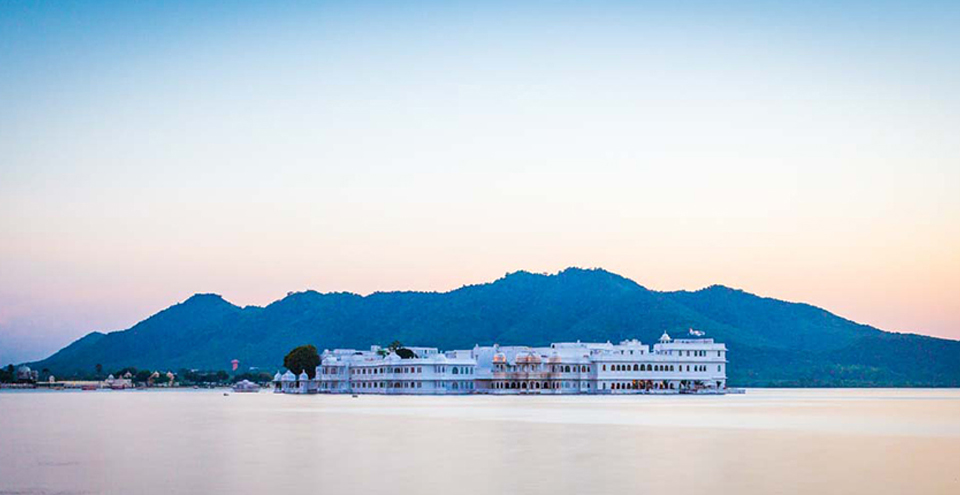 Now a hotel but was originally called Jagniwas and served as a summer palace. Built between 1743 and 1746 on the island near Jagmandir in Lake Pichola, the palace, which faces east, is a wondrous sight to behold. The walls made of black and white marbles are adorned with semi-precious stones and ornamented niches. Gardens, fountains, pillared terraces, and columns line its courtyards.
Now a hotel but was originally called Jagniwas and served as a summer palace. Built between 1743 and 1746 on the island near Jagmandir in Lake Pichola, the palace, which faces east, is a wondrous sight to behold. The walls made of black and white marbles are adorned with semi-precious stones and ornamented niches. Gardens, fountains, pillared terraces, and columns line its courtyards.
MONSOON PALACE
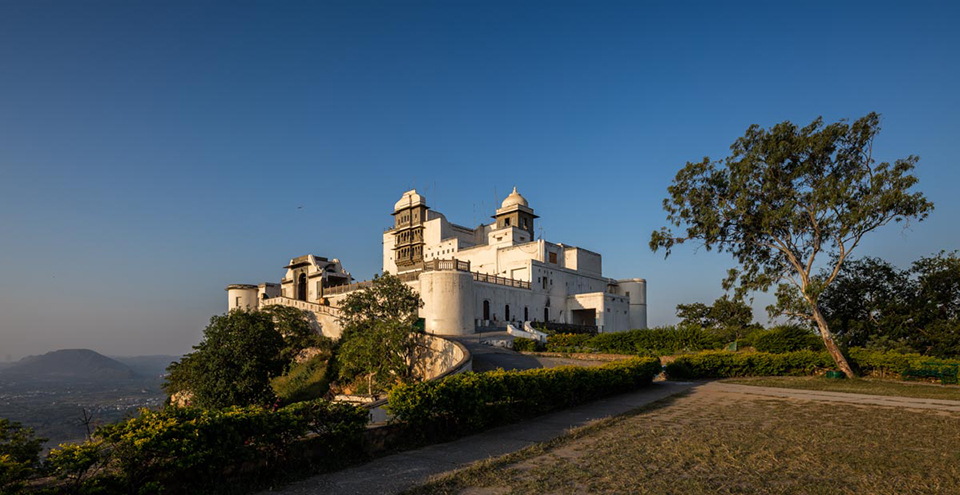 Situated just outside Udaipur, this 19th-century palace is built on top of Bansdara hills. Used as a monsoon palace and hunting lodge, its builder, Maharana Sajjan Singh, originally planned to make it an astronomical center. The plan was cancelled with Maharana Sajjan Singh’s premature death. It is still an awe-inspiring sight on the Udaipur skyline and offers spectacular views of the city and the areas around.
Situated just outside Udaipur, this 19th-century palace is built on top of Bansdara hills. Used as a monsoon palace and hunting lodge, its builder, Maharana Sajjan Singh, originally planned to make it an astronomical center. The plan was cancelled with Maharana Sajjan Singh’s premature death. It is still an awe-inspiring sight on the Udaipur skyline and offers spectacular views of the city and the areas around.
FATEH SAGAR LAKE
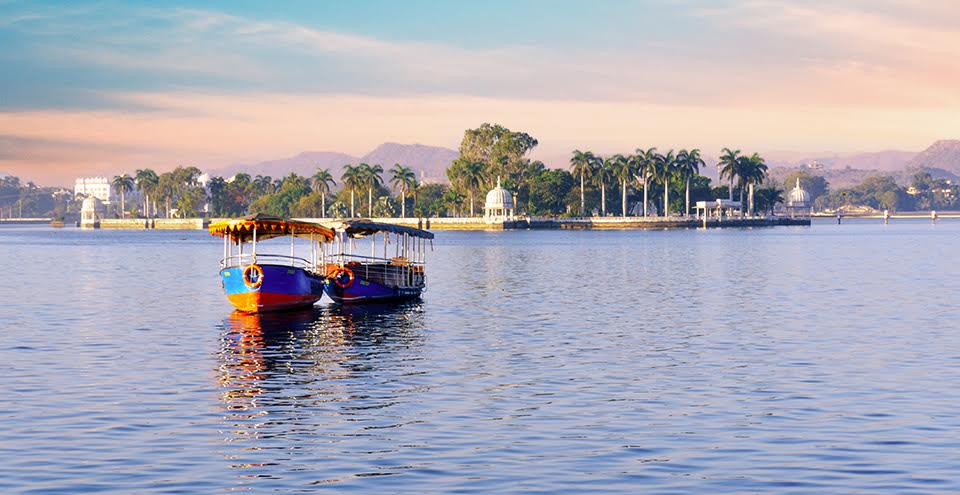 This delightful lake, bordered by hills and woodlands, lies to the north of Lake Pichola. This artificial lake is connected to Lake Pichola by a canal. The lake houses the beautiful Nehru Island as well as an islet on which stands the Udaipur Solar Observatory. It was inaugurated by the Duke of Connaught and was initially called Connaught Bundh.
This delightful lake, bordered by hills and woodlands, lies to the north of Lake Pichola. This artificial lake is connected to Lake Pichola by a canal. The lake houses the beautiful Nehru Island as well as an islet on which stands the Udaipur Solar Observatory. It was inaugurated by the Duke of Connaught and was initially called Connaught Bundh.
LAKE PICHOLA
 Picholi was the name of a village that lent its name to the lake. The islands of Jagniwas and Jagmandir are housed in this lake. Along the eastern banks of the lake lies the City Palace. A boat ride in the lake around sunset offers a breathtaking view of the Lake and City Palace.
Picholi was the name of a village that lent its name to the lake. The islands of Jagniwas and Jagmandir are housed in this lake. Along the eastern banks of the lake lies the City Palace. A boat ride in the lake around sunset offers a breathtaking view of the Lake and City Palace.
DOODH TALAI LAKE
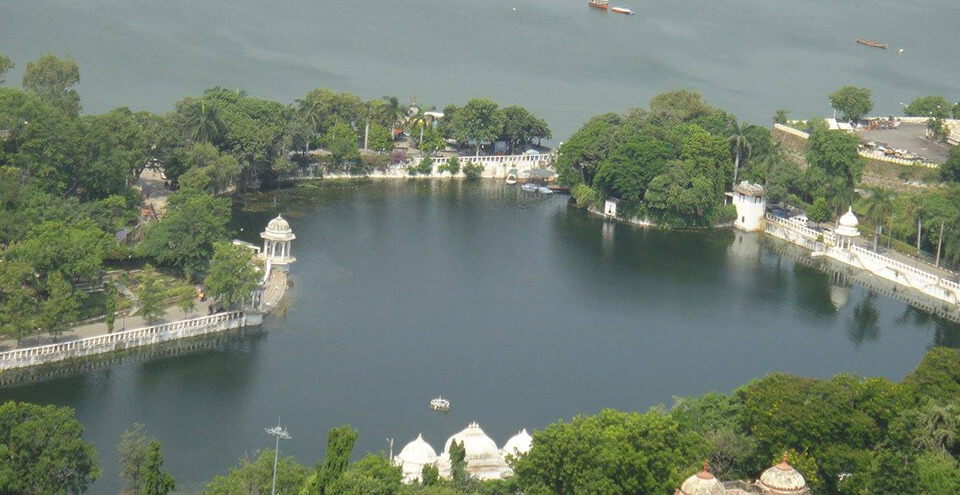 The road that takes visitors to Pichola Lake has another popular destination – the Doodh Talai Lake. The lake is nestled between several small hillocks which themselves are tourist attractions. The Deen Dayal Upadhyay Park and the Manikya Lal Verma Garden are part of the Doodh Talai Lake Garden.
The road that takes visitors to Pichola Lake has another popular destination – the Doodh Talai Lake. The lake is nestled between several small hillocks which themselves are tourist attractions. The Deen Dayal Upadhyay Park and the Manikya Lal Verma Garden are part of the Doodh Talai Lake Garden.
JAISAMAND LAKE
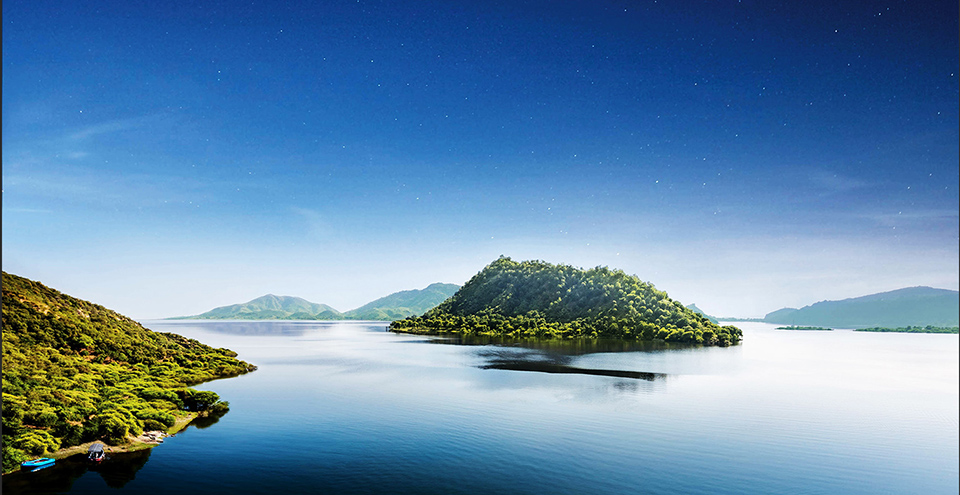 Jaisamand Lake is known for being the second largest man-made sweet water lake in Asia. It is popular among the locals as a weekend picnic destination. Locals say that the lake was constructed to halt the waters of Ruparel River. This lake boasts of a large island, which is home to various species of birds, at its centre.
Jaisamand Lake is known for being the second largest man-made sweet water lake in Asia. It is popular among the locals as a weekend picnic destination. Locals say that the lake was constructed to halt the waters of Ruparel River. This lake boasts of a large island, which is home to various species of birds, at its centre.
BADI LAKE
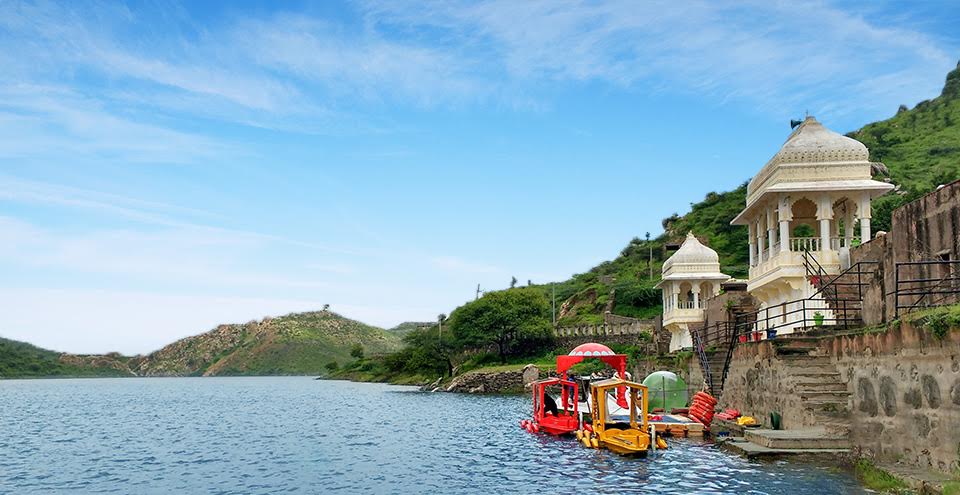 Badi Lake is an artificial lake that was built by Maharana Raj Singh to help the city counterbalance the devastating effects of drought. He named the lake Jiyan Sagar after his mother Jana Devi. During the drought of 1973, the lake proved to be a blessing for the people of Udaipur. And today, the lake has become a popular attraction in the city, for both locals and tourists. Surrounded by three chhatris, the Badi Lake is one of the finest fresh water lakes in the country, and is counted among the major tourist attractions in Udaipur. Located about 12 km from the city, the ambiance of the lake is calm and tranquil, and offers a scenic respite from the hustle and bustle of city life.
Badi Lake is an artificial lake that was built by Maharana Raj Singh to help the city counterbalance the devastating effects of drought. He named the lake Jiyan Sagar after his mother Jana Devi. During the drought of 1973, the lake proved to be a blessing for the people of Udaipur. And today, the lake has become a popular attraction in the city, for both locals and tourists. Surrounded by three chhatris, the Badi Lake is one of the finest fresh water lakes in the country, and is counted among the major tourist attractions in Udaipur. Located about 12 km from the city, the ambiance of the lake is calm and tranquil, and offers a scenic respite from the hustle and bustle of city life.
UDAI SAGAR LAKE
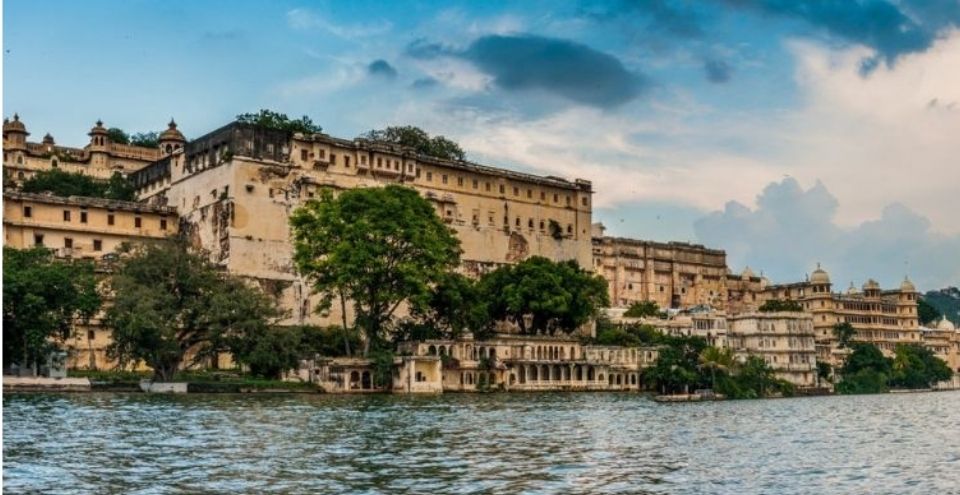 Udai Sagar Lake is one of the five striking lakes situated in Udaipur. Located about 13 kilometres to the east of Udaipur, the construction of this lake was started in 1559 by Maharana Udai Singh. The lake is actually a result of a dam being built on the river Berach to supply adequate water to the Maharana’s kingdom. Udai Sagar Lake is 4 kms in length, 2.5 kilometres in width and about 9 meters at its deepest.
Udai Sagar Lake is one of the five striking lakes situated in Udaipur. Located about 13 kilometres to the east of Udaipur, the construction of this lake was started in 1559 by Maharana Udai Singh. The lake is actually a result of a dam being built on the river Berach to supply adequate water to the Maharana’s kingdom. Udai Sagar Lake is 4 kms in length, 2.5 kilometres in width and about 9 meters at its deepest.
SAHELIYON KI BARI
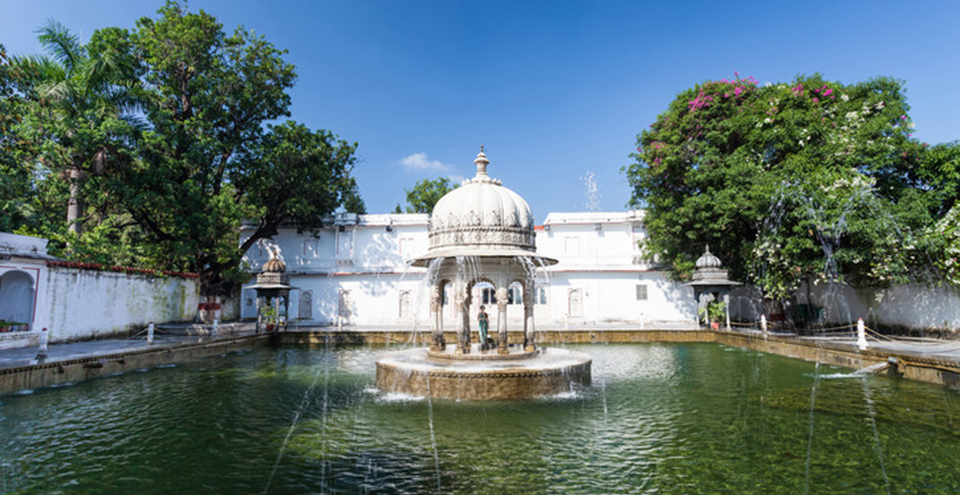 Built by Maharana Sangram Singh II as a garden for women, Saheliyon-ki-Bari or the Garden of the Maidens is a popular tourist destination. Along with a small museum, it has several attractions such as marble elephants, fountains, kiosks and a lotus pool.
Built by Maharana Sangram Singh II as a garden for women, Saheliyon-ki-Bari or the Garden of the Maidens is a popular tourist destination. Along with a small museum, it has several attractions such as marble elephants, fountains, kiosks and a lotus pool.
GULAB BAGH AND ZOO
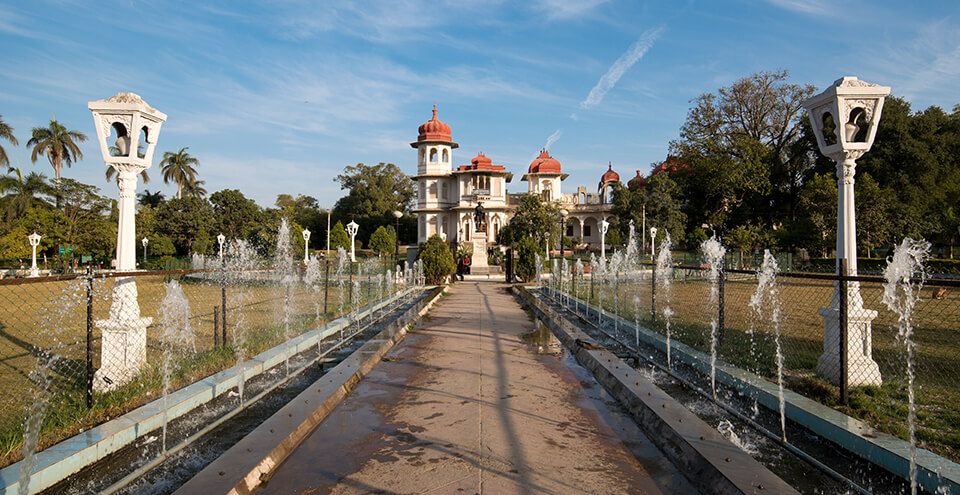 Gulab Bagh (Sajjan Niwas Garden) is the largest garden in Udaipur. Spread over 100 acres, the garden proudly displays innumerable species of roses, from which it also gets its name.
Gulab Bagh (Sajjan Niwas Garden) is the largest garden in Udaipur. Spread over 100 acres, the garden proudly displays innumerable species of roses, from which it also gets its name.
JAG MANDIR
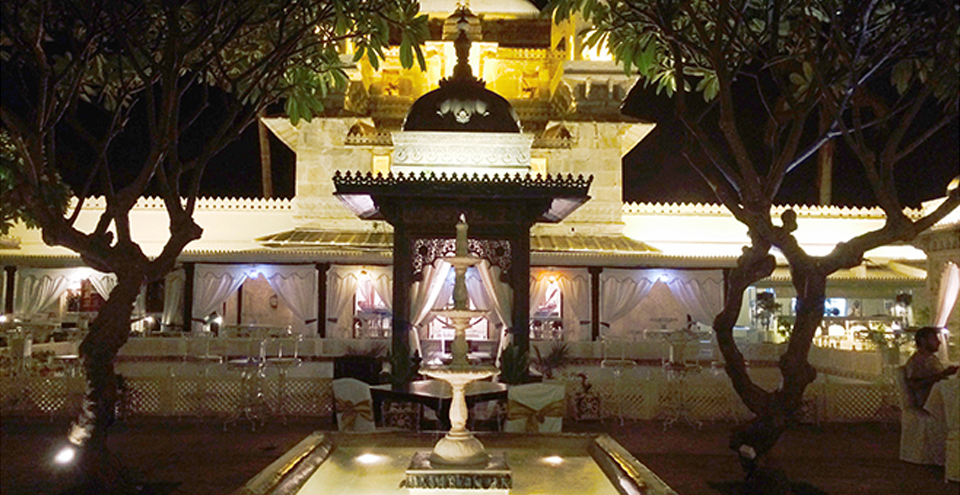 Jagmandir is a palace built on an island on the Lake Pichola. Also called the ‘Lake Garden Palace’, the construction for this began in 1620 and was completed around 1652. The royal family used the palace as its summer resort and for hosting parties. Interestingly, Prince Khurram – later Emperor Shah Jahan – was given shelter here when he rebelled against his father Emperor Jahangir. The Palace had such an impact on Emperor Shah Jahan that it went on to become the inspiration for one of the most magnificent Wonders of the World, The Taj Mahal.
Jagmandir is a palace built on an island on the Lake Pichola. Also called the ‘Lake Garden Palace’, the construction for this began in 1620 and was completed around 1652. The royal family used the palace as its summer resort and for hosting parties. Interestingly, Prince Khurram – later Emperor Shah Jahan – was given shelter here when he rebelled against his father Emperor Jahangir. The Palace had such an impact on Emperor Shah Jahan that it went on to become the inspiration for one of the most magnificent Wonders of the World, The Taj Mahal.
AHAR MUSEUM
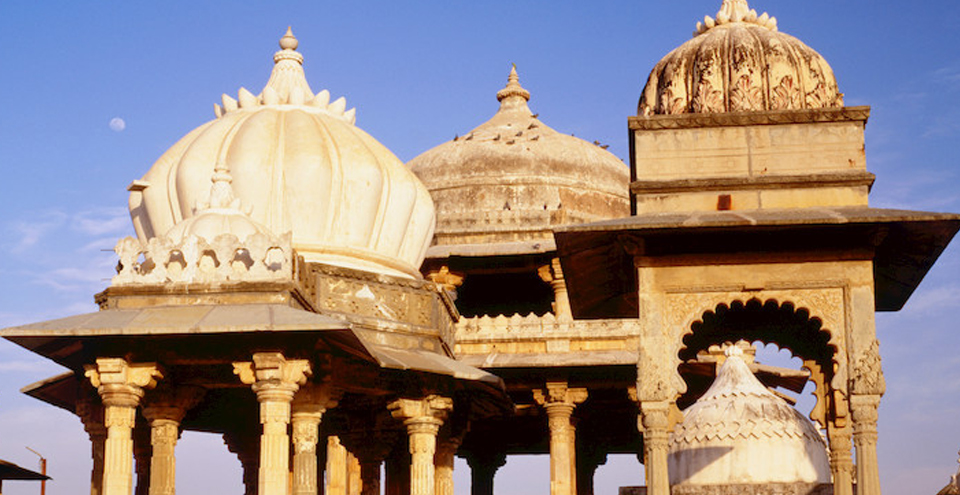 Ahar Museum is in close proximity to an impressive cluster of cenotaphs of the Maharanas of Mewar. The museum has a small, but rare collection of earthen pottery. You can also browse through sculptures and archaeological finds, a few dating back to 1700 BC. A 10th century metal figure of Buddha is a special attraction here.
Ahar Museum is in close proximity to an impressive cluster of cenotaphs of the Maharanas of Mewar. The museum has a small, but rare collection of earthen pottery. You can also browse through sculptures and archaeological finds, a few dating back to 1700 BC. A 10th century metal figure of Buddha is a special attraction here.
JAGDISH TEMPLE
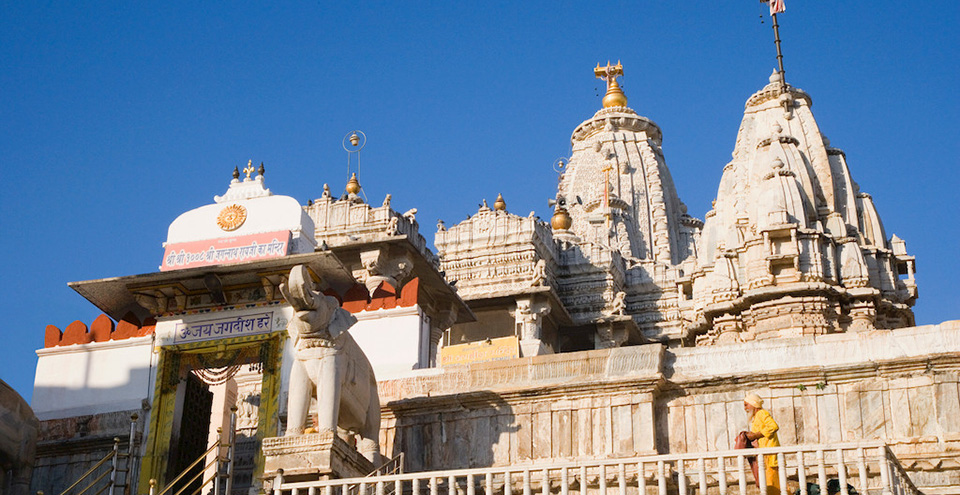 An example of the Indo-Aryan style of architecture, Jagdish Temple was built in 1651 and continues to be one of the most famous temples in and around Udaipur. Dedicated to Lord Vishnu, the structure is an architectural marvel with carved pillars, graceful ceilings and painted walls. This three-storied temple was built by Maharana Jagat Singh I.
An example of the Indo-Aryan style of architecture, Jagdish Temple was built in 1651 and continues to be one of the most famous temples in and around Udaipur. Dedicated to Lord Vishnu, the structure is an architectural marvel with carved pillars, graceful ceilings and painted walls. This three-storied temple was built by Maharana Jagat Singh I.
SUKHADIA CIRCLE
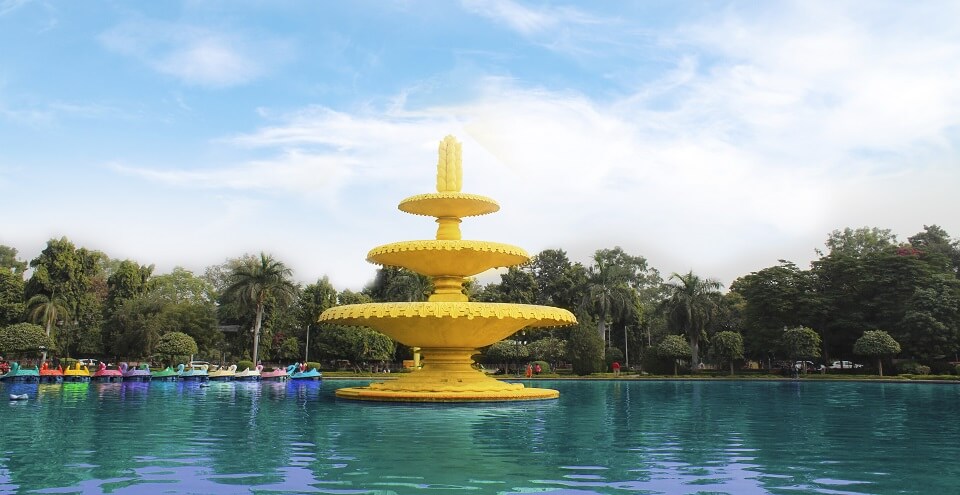 Sukhadia Circle lies to the north of Udaipur. It comprises a small pond that also houses a 21 foot tall, three-tiered marble fountain. Decorated with beautifully carved motifs, the fountain looks spectacular at night when it is lit up. The fountain is surrounded by gardens, creating a perfect oasis in a city bustling with tourists.
Sukhadia Circle lies to the north of Udaipur. It comprises a small pond that also houses a 21 foot tall, three-tiered marble fountain. Decorated with beautifully carved motifs, the fountain looks spectacular at night when it is lit up. The fountain is surrounded by gardens, creating a perfect oasis in a city bustling with tourists.
BHARATIYA LOK KALA MANDAL
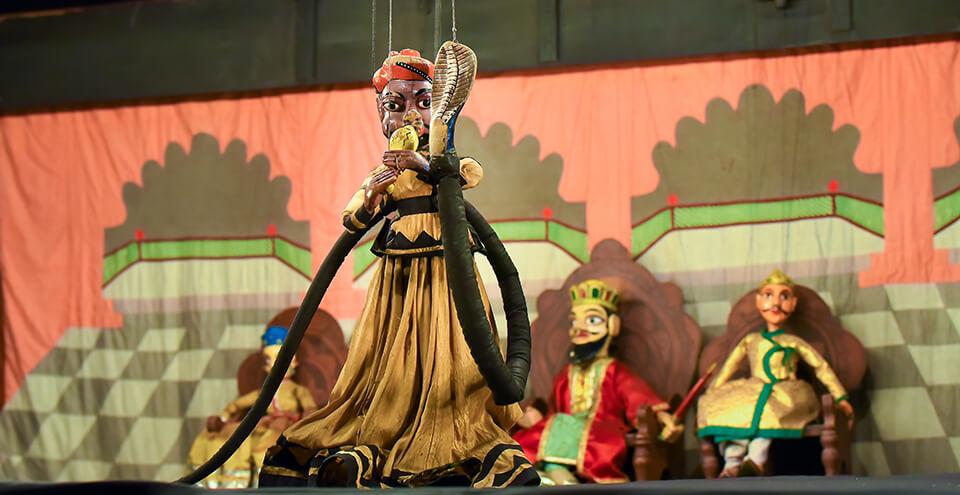 Dedicated to the study of folk art, culture, songs and festivals of Rajasthan, Gujrat and Madhya Pradesh, Bharatiya Lok Kala Mandal is a cultural institution in Udaipur. Besides propagating folk culture, it also houses a museum that exhibits various artefacts of Rajasthani culture.
Dedicated to the study of folk art, culture, songs and festivals of Rajasthan, Gujrat and Madhya Pradesh, Bharatiya Lok Kala Mandal is a cultural institution in Udaipur. Besides propagating folk culture, it also houses a museum that exhibits various artefacts of Rajasthani culture.
BAGORE KI HAVELI
 Bagore-ki-Haveli is located by Lake Pichola, at Gangaur Ghat. Amar Chand Badwa, the Prime Minister of Mewar, built it in the 18th century. The massive palace has over a hundred rooms that display costumes and modern art. The glass and mirrors in the interiors are structured in classical haveli style.
Bagore-ki-Haveli is located by Lake Pichola, at Gangaur Ghat. Amar Chand Badwa, the Prime Minister of Mewar, built it in the 18th century. The massive palace has over a hundred rooms that display costumes and modern art. The glass and mirrors in the interiors are structured in classical haveli style.
SHILPGRAM
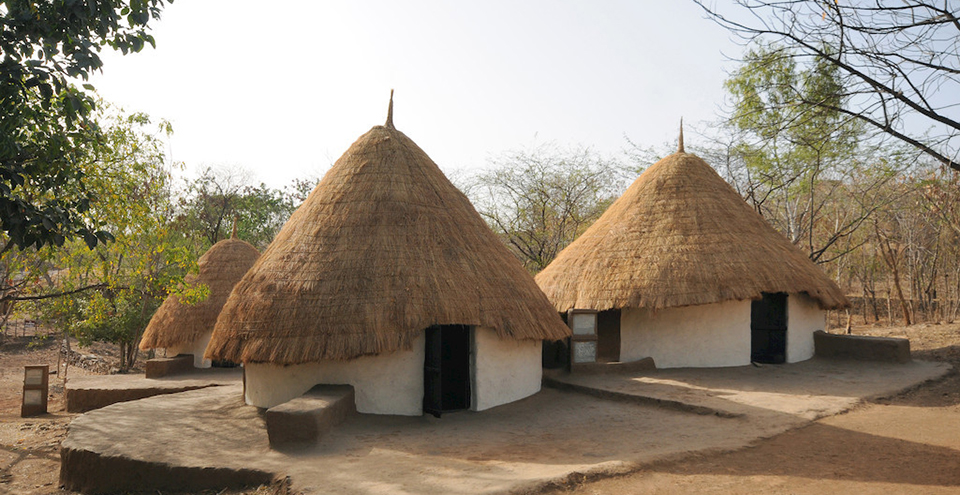 Situated 7 kms west of Udaipur near Lake Fateh Sagar is the Centre’s Shilpgram – the Rural Arts and Crafts Complex. Spread over 70 acres, and surrounded by the Aravallis, the Rural Arts and Crafts Complex has been conceived as a living museum to depict the lifestyles of the folk and tribal people of the west zone.
Situated 7 kms west of Udaipur near Lake Fateh Sagar is the Centre’s Shilpgram – the Rural Arts and Crafts Complex. Spread over 70 acres, and surrounded by the Aravallis, the Rural Arts and Crafts Complex has been conceived as a living museum to depict the lifestyles of the folk and tribal people of the west zone.
HALDIGHATI
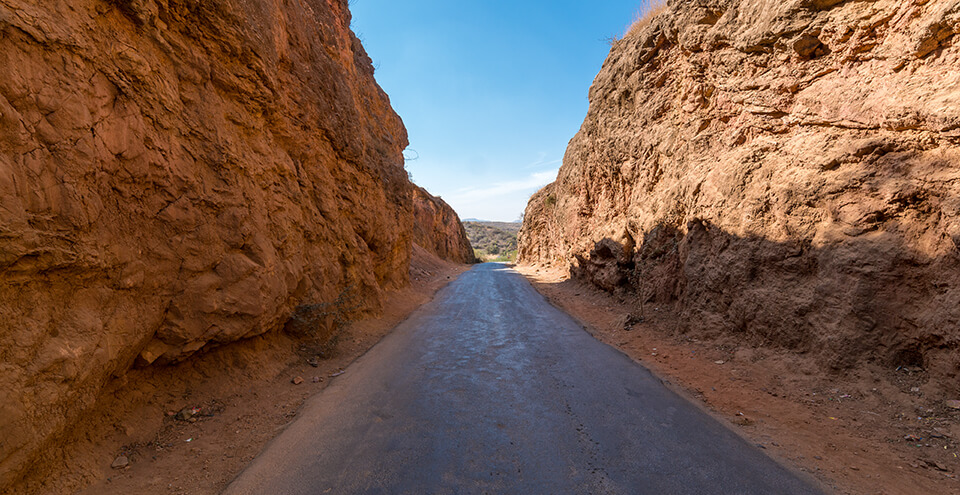 Haldighati is a famed mountain pass in the hills of the Aravalli Range. The pass, about 40 kilometres from Udaipur, connects the districts of Rajsamand and Pali. The pass gets its name from the yellow-coloured soil of the region (turmeric is called haldi in Hindi).
Haldighati is a famed mountain pass in the hills of the Aravalli Range. The pass, about 40 kilometres from Udaipur, connects the districts of Rajsamand and Pali. The pass gets its name from the yellow-coloured soil of the region (turmeric is called haldi in Hindi).
NAVALAKHA MAHAL (GULAB BAGH)
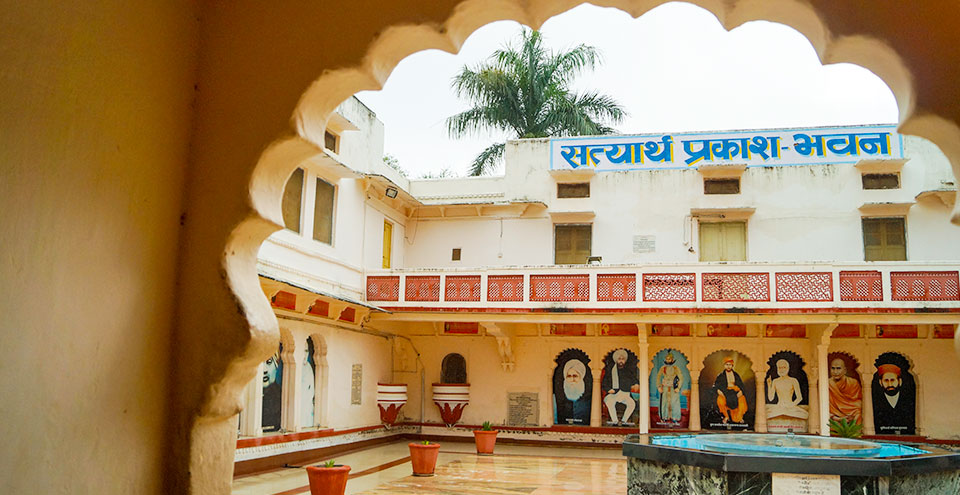 Navalakha Mahal is situated in the heart of a Gulab Bag which was originally laid out in the nineteenth century in the historical city of Udaipur. Maharishi Dayanand who arrived in Udaipur on 10 August 1882 on the invitation of His Highness Maharana Sajjan Singh, the 72nd ruler of the Kingdom of Mewar, remained here for almost six and a half months and stayed in Navalakha Mahal. It was in Navalakha Mahal Maharishi Dayanand completed the writing of his best work, the immortal Satyarth Prakash.
Navalakha Mahal is situated in the heart of a Gulab Bag which was originally laid out in the nineteenth century in the historical city of Udaipur. Maharishi Dayanand who arrived in Udaipur on 10 August 1882 on the invitation of His Highness Maharana Sajjan Singh, the 72nd ruler of the Kingdom of Mewar, remained here for almost six and a half months and stayed in Navalakha Mahal. It was in Navalakha Mahal Maharishi Dayanand completed the writing of his best work, the immortal Satyarth Prakash.
WAX MUSEUM
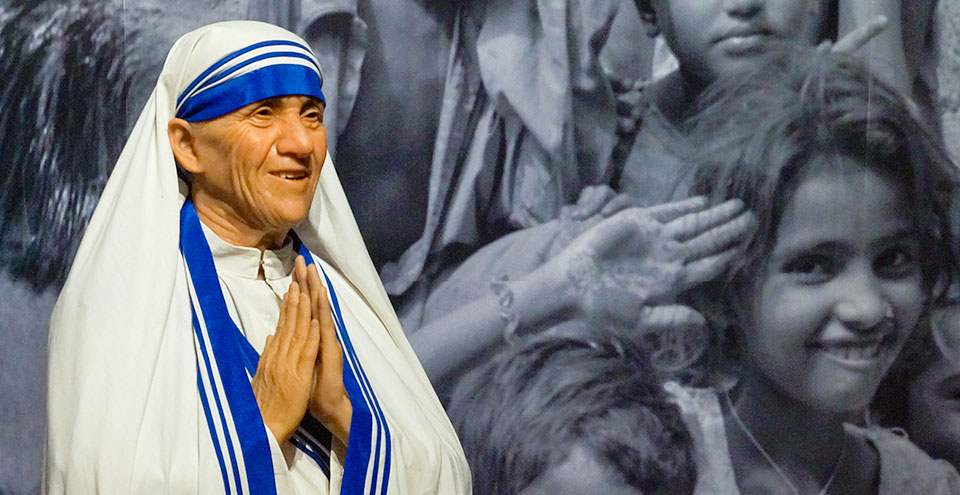 The Hollywood Wax Museum is an exciting interactive visitor attraction located on Sajjangarh road. The Museum has been designed to deliver an interactive experience taking you on a journey through wax effigy. the exceptional life-like wax work characters you can expect at the celebrity wax museum .The Museum is the ultimate entertainment experience for all . The wax museum also offers 9 D Action cinema ,Gaming Zone, Mirror Image & Horror Show.
The Hollywood Wax Museum is an exciting interactive visitor attraction located on Sajjangarh road. The Museum has been designed to deliver an interactive experience taking you on a journey through wax effigy. the exceptional life-like wax work characters you can expect at the celebrity wax museum .The Museum is the ultimate entertainment experience for all . The wax museum also offers 9 D Action cinema ,Gaming Zone, Mirror Image & Horror Show.
UDAIPUR BIOLOGICAL PARK
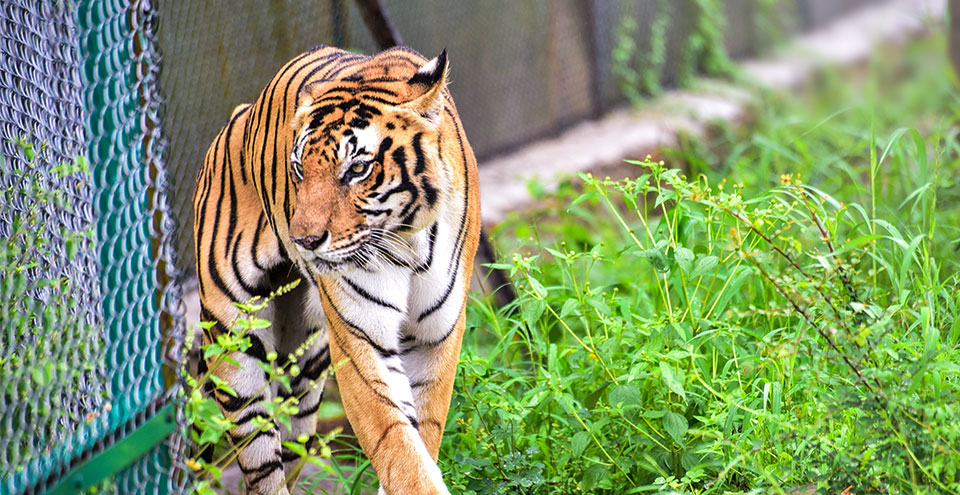 The Udaipur Biological Park, also known as the Sajjangarh Biological Park is located just beneath the Monsoon Palace, and is around 8 km from the city center. The Sajjangarh Biological Park was built with an aim to conserve the threatened flora and fauna within the area. Upon its inauguration, the park received more than 46 thousand visitors in a month, which is a feat in itself. Open all around the year, the best time to visit this park is during the monsoon season, which lasts from July to September. During the monsoons, the area becomes lush green and quite aesthetic, if we may add. The biological park is home to a number of varieties of animals and birds. At present, it has 60 animals from 21 species, including the Himalayan black bear, panthers, Indian porcupine, chital, ghariyal, marsh crocodile, white tiger, Asiatic lion etc., making it a haven for those who love to see wildlife up close.
The Udaipur Biological Park, also known as the Sajjangarh Biological Park is located just beneath the Monsoon Palace, and is around 8 km from the city center. The Sajjangarh Biological Park was built with an aim to conserve the threatened flora and fauna within the area. Upon its inauguration, the park received more than 46 thousand visitors in a month, which is a feat in itself. Open all around the year, the best time to visit this park is during the monsoon season, which lasts from July to September. During the monsoons, the area becomes lush green and quite aesthetic, if we may add. The biological park is home to a number of varieties of animals and birds. At present, it has 60 animals from 21 species, including the Himalayan black bear, panthers, Indian porcupine, chital, ghariyal, marsh crocodile, white tiger, Asiatic lion etc., making it a haven for those who love to see wildlife up close.
UDAIPUR FISH AQUARIUM
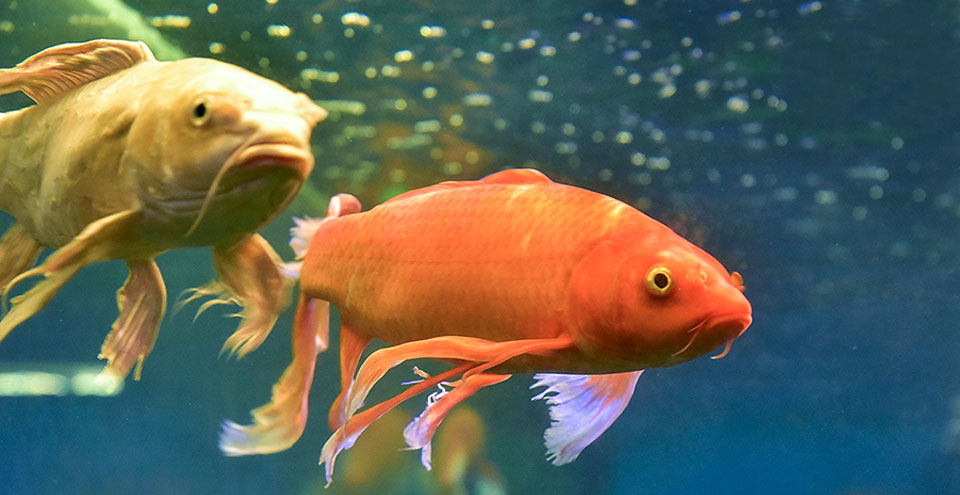 The Under the Sun Fish Aquarium at Fateh Sagar Pal in Udaipur has managed to mark its distinct position on the map as India’s first Hi-Tech virtual fish aquarium. In the first phase, the Under the Sun aquarium is playing host to 156 varieties of sea fish and fresh water fish, which have been procured from 16 countries around the world. In the long run, this number will go up to 1500 varieties! The 125 meter long gallery features specially built tanks that let the visitors feel as if they are deep within the ocean. The fish at this aquarium vary, with the smallest one being hardly a centimeter long, and the largest fish, Aropama, being 9 feet long.The aquarium features a touch pool to let the kids play with the fish,along with and LED screen for everyfish tank to know more about the fishes within the aquarium. This is one aquarium that you’d love to visit for true interactive fun!
The Under the Sun Fish Aquarium at Fateh Sagar Pal in Udaipur has managed to mark its distinct position on the map as India’s first Hi-Tech virtual fish aquarium. In the first phase, the Under the Sun aquarium is playing host to 156 varieties of sea fish and fresh water fish, which have been procured from 16 countries around the world. In the long run, this number will go up to 1500 varieties! The 125 meter long gallery features specially built tanks that let the visitors feel as if they are deep within the ocean. The fish at this aquarium vary, with the smallest one being hardly a centimeter long, and the largest fish, Aropama, being 9 feet long.The aquarium features a touch pool to let the kids play with the fish,along with and LED screen for everyfish tank to know more about the fishes within the aquarium. This is one aquarium that you’d love to visit for true interactive fun!
VINTAGE CAR COLLECTION
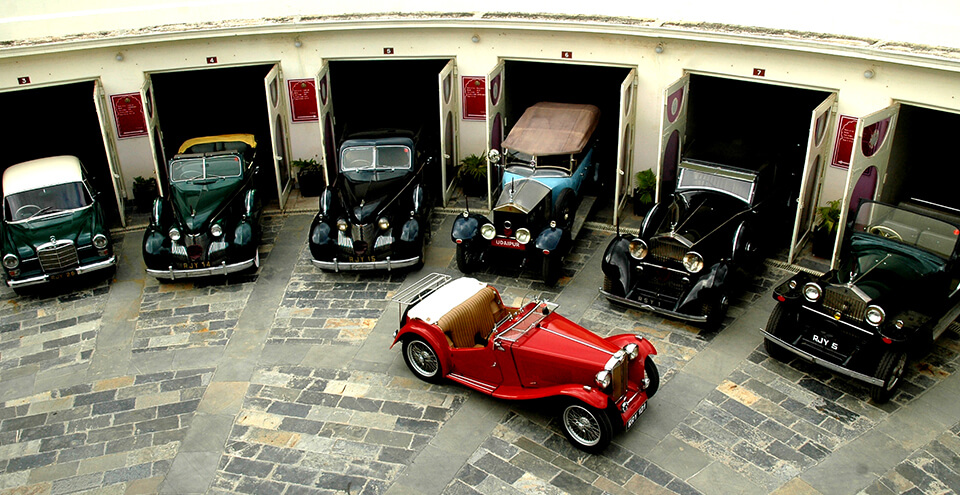 The collection within the grounds of the Garden Hotel comprises a variety of vintage and classic vehicles like Cadillac, Chevrolet, Morris etc owned by the Maharanas of Udaipur. They used these automobiles as their luxurious modes of transport.
The collection within the grounds of the Garden Hotel comprises a variety of vintage and classic vehicles like Cadillac, Chevrolet, Morris etc owned by the Maharanas of Udaipur. They used these automobiles as their luxurious modes of transport.
THE CRYSTAL GALLERY
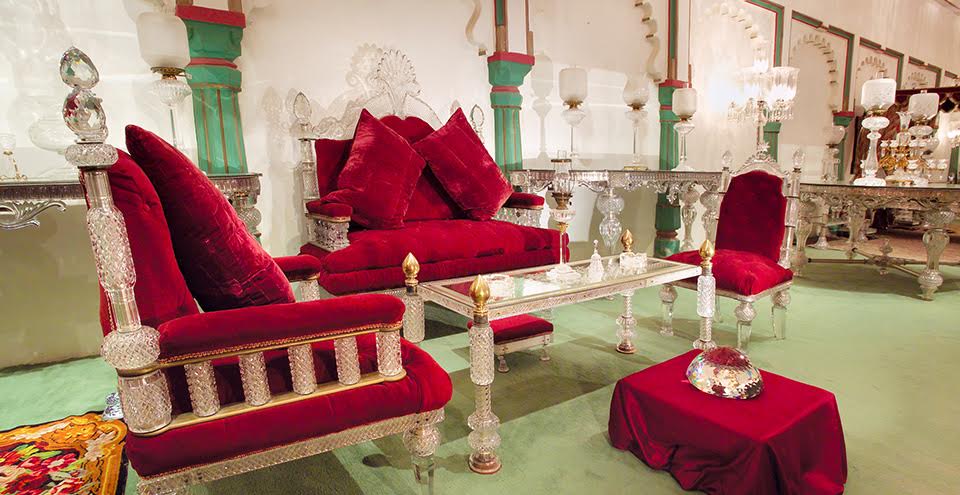 The Udaipur Collection of crystal is one of the largest and most complete collections of Osler cut glass in existence. In both diversity of objects and in the quality and grandeur of the included pieces, it holds a unique place in the decorative art world. Most of this collection was commissioned by Maharana Sajjan Singh in 1878, with the larger commissions of the furniture pieces being given to Osler in 1881. The exquisite crystal items in the gallery range from dining table, table, sofa set, washing bowl, goblet, tray, decanter, to perfume bottles, candle stands, crockery and even beds. The highlight of the gallery is a jewel studded carpet, embodying peerless class. The gallery even exhibits a Royal punkah (manually operated fan) in crystal and soft red satin material with the Mewar emblem of the Sun embroidered on it. The Crystal Gallery exhibits artefacts primarily created by F. & C. Osler, the foremost manufacturers of monumental cut glass luxury objects in the Victorian era and thereafter. Established in Birmingham in 1807, Osler revolutionised the cut glass industry by exploring the material’s structural possibilities, conceiving for the first time a monumental form of crystal, of which the Udaipur Collection is a fine example. F. & C. Osler traded very successfully through much of the 19th century both in Britain and in India.
The Udaipur Collection of crystal is one of the largest and most complete collections of Osler cut glass in existence. In both diversity of objects and in the quality and grandeur of the included pieces, it holds a unique place in the decorative art world. Most of this collection was commissioned by Maharana Sajjan Singh in 1878, with the larger commissions of the furniture pieces being given to Osler in 1881. The exquisite crystal items in the gallery range from dining table, table, sofa set, washing bowl, goblet, tray, decanter, to perfume bottles, candle stands, crockery and even beds. The highlight of the gallery is a jewel studded carpet, embodying peerless class. The gallery even exhibits a Royal punkah (manually operated fan) in crystal and soft red satin material with the Mewar emblem of the Sun embroidered on it. The Crystal Gallery exhibits artefacts primarily created by F. & C. Osler, the foremost manufacturers of monumental cut glass luxury objects in the Victorian era and thereafter. Established in Birmingham in 1807, Osler revolutionised the cut glass industry by exploring the material’s structural possibilities, conceiving for the first time a monumental form of crystal, of which the Udaipur Collection is a fine example. F. & C. Osler traded very successfully through much of the 19th century both in Britain and in India.
NAGDA
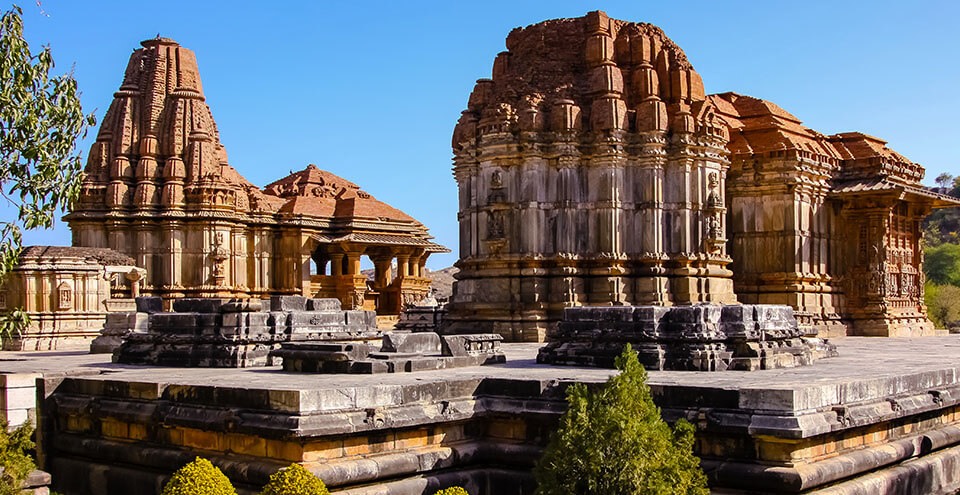 Nagda is 22kms from Udaipur, an ancient site located at the foothills of the Aravali range and has traces of 6th century A.D. Today it is renowned more for the intricately carved Sahastrabahu temple popularly known as Sas-Bahu temples that date back to the 9th – 10th century A.D. The interesting architecture and elaborate carving can also be seen in the magnificent toran or archway. Also of interest is the splendid Jain temple of Adhbudji located there.
Nagda is 22kms from Udaipur, an ancient site located at the foothills of the Aravali range and has traces of 6th century A.D. Today it is renowned more for the intricately carved Sahastrabahu temple popularly known as Sas-Bahu temples that date back to the 9th – 10th century A.D. The interesting architecture and elaborate carving can also be seen in the magnificent toran or archway. Also of interest is the splendid Jain temple of Adhbudji located there.
SAJJANGARH BIOLOGICAL PARK
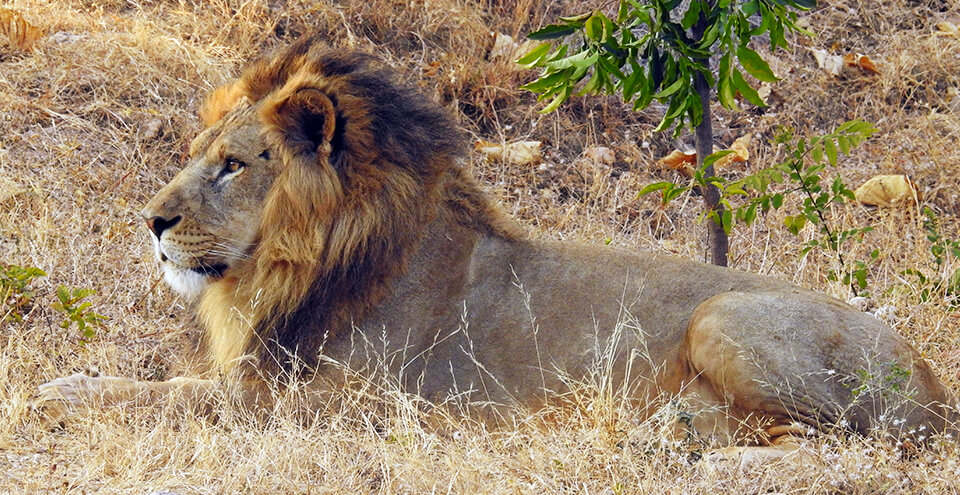 Located just outside the Sajjangarh Wildlife Sanctuary, at the foot hills of Bans-Dahara hills is the Sajjangarh Biological Park spread over 36 hectares of land. In this park one can see the Carnivores and Herbivores animals moving around in their natural habitat. One can visit the Park on foot or by Golf car on payment basis.
Located just outside the Sajjangarh Wildlife Sanctuary, at the foot hills of Bans-Dahara hills is the Sajjangarh Biological Park spread over 36 hectares of land. In this park one can see the Carnivores and Herbivores animals moving around in their natural habitat. One can visit the Park on foot or by Golf car on payment basis.
SAHASTRA BAHU TEMPLE
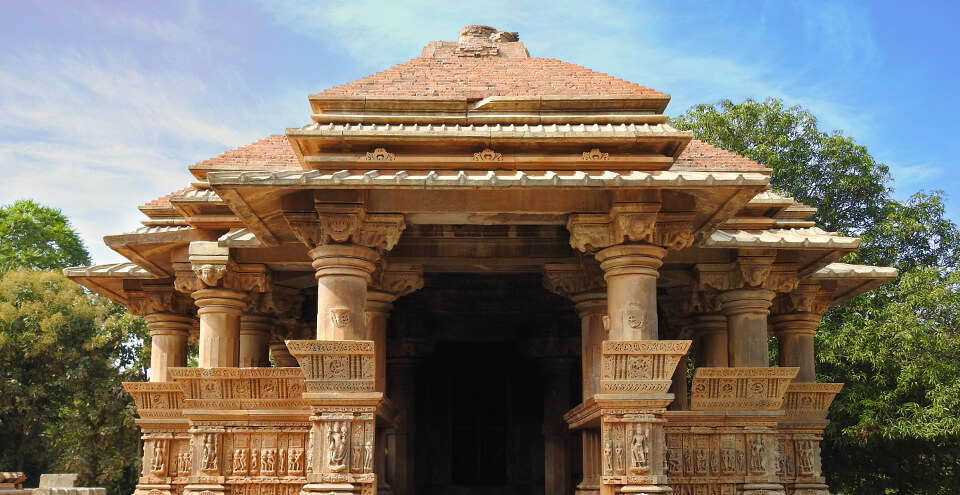 Located about 22 km from Udaipur, in Nagda village on NH-8, stands the Sahastra Bahu Temple. The temple is dedicated to Lord Vishnu, and the name means ‘one with a million arms’, which is one of the forms of Vishnu. The site of the temple borders green marshlands, and is home to numerous date palms which give the temple a unique oasis-like ambiance. The temple is a 10 th century complex and is featured on the Archaeological Survey of India’s list of heritage monuments. The temple is adorned with numerous beautiful carvings, based on Ramayana. Open from sunrise till the sunsets, the temple is a magnificent structure that offers exquisite sculptures, making it a site that’s every bit worth the visit.
Located about 22 km from Udaipur, in Nagda village on NH-8, stands the Sahastra Bahu Temple. The temple is dedicated to Lord Vishnu, and the name means ‘one with a million arms’, which is one of the forms of Vishnu. The site of the temple borders green marshlands, and is home to numerous date palms which give the temple a unique oasis-like ambiance. The temple is a 10 th century complex and is featured on the Archaeological Survey of India’s list of heritage monuments. The temple is adorned with numerous beautiful carvings, based on Ramayana. Open from sunrise till the sunsets, the temple is a magnificent structure that offers exquisite sculptures, making it a site that’s every bit worth the visit.
MENAR
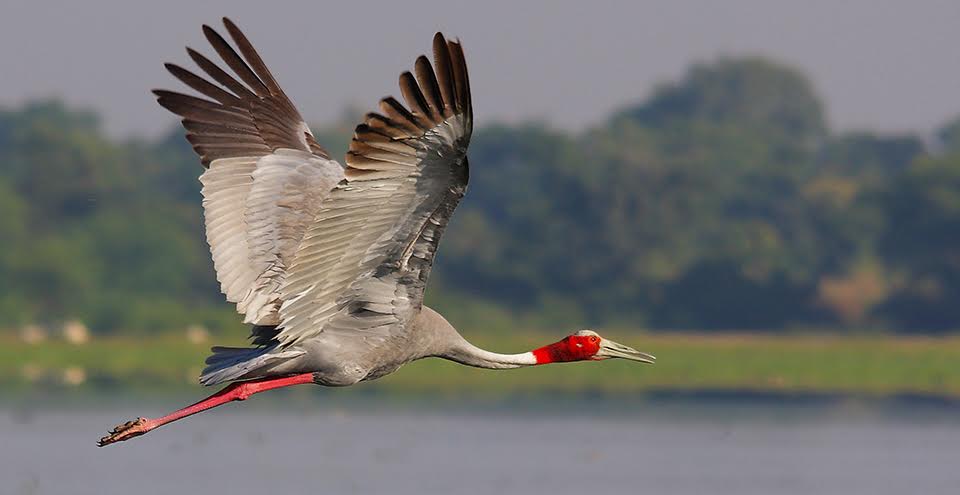 Well-known as the City of Lakes, Udaipur is home to a number of beautiful lakes. Menar is a village known as house of number of species of Migratory Birds during winters. There are two ponds namely Brahm Talab and Dand Talab which hosts migratory birds. This village is a hidden tourist destination, can be one of the most favoured spots amongst birders. Located at a distance of approx 48 kms from Udaipur on Udaipur Chittorgarh Road, the best time to visit Menar is during the winters when the ponds plays host to a number of migratory birds. Some of the species that you can catch a glimpse of when here include the Greater Flamingo, White Tailed Lapwing, Marsh Harrier, Black Kite, Jungle Quail, Crow Pheasant, etc. Free from tourists, the ponds offer a peaceful countryside atmosphere for you to relax in. source: http://www.tourism.rajasthan.gov.in/udaipur.html
Well-known as the City of Lakes, Udaipur is home to a number of beautiful lakes. Menar is a village known as house of number of species of Migratory Birds during winters. There are two ponds namely Brahm Talab and Dand Talab which hosts migratory birds. This village is a hidden tourist destination, can be one of the most favoured spots amongst birders. Located at a distance of approx 48 kms from Udaipur on Udaipur Chittorgarh Road, the best time to visit Menar is during the winters when the ponds plays host to a number of migratory birds. Some of the species that you can catch a glimpse of when here include the Greater Flamingo, White Tailed Lapwing, Marsh Harrier, Black Kite, Jungle Quail, Crow Pheasant, etc. Free from tourists, the ponds offer a peaceful countryside atmosphere for you to relax in. source: http://www.tourism.rajasthan.gov.in/udaipur.html